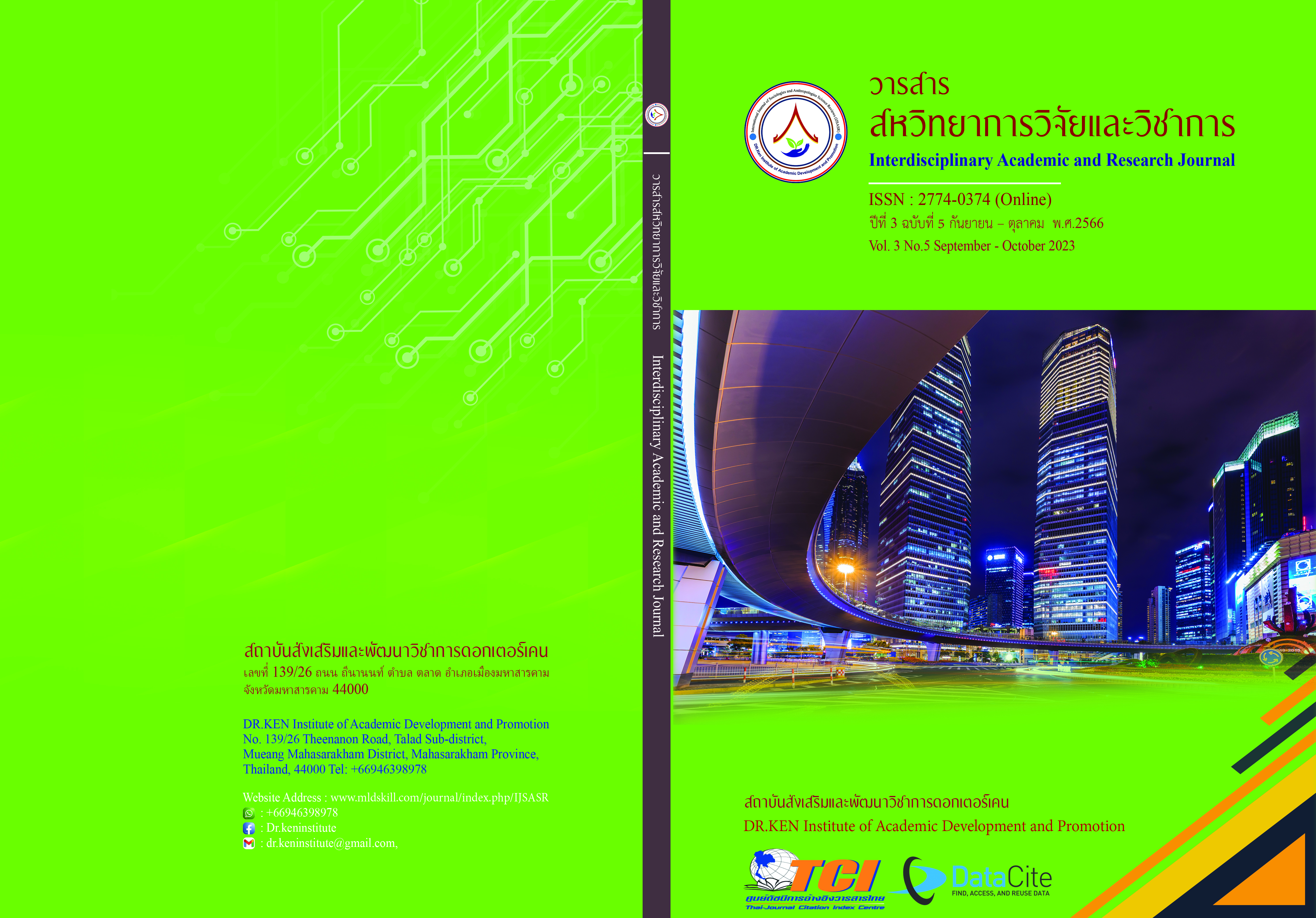The Development of a Situational Scale to Measure the Digital Citizenship of Junior High School Students
DOI:
https://doi.org/10.14456/iarj.2023.236Keywords:
Digital Citizenship;, Situational Scale; , Item Response TheoryAbstract
Digital citizenship requires learning and one should understand digital technology and be able to use digital technology correctly, securely, and in compliance with digital technology laws. The creation of a 4-choice situational digital citizenship scale with different score values will increase the effectiveness of digital citizenship measures for junior high school students. The objectives of this research are as follows: (1) to create of a situational scale to measure the digital citizenship of junior high school students. (2) To examine the quality of the digital citizenship scale by using a situational test of junior high school students applying Multidimensional Item Response Theory. The sample in this study consisted of 750 junior high school students under the authority of the secondary educational service area office twenty-seven in the 2022 academic year. The data were analyzed using the IRT Pro program. The results of this research were as follows: (1) The results of the interview to use the situation to create a measurement form resulted in a situational measure with 3 main components, 9 sub-components (45 items) (2) Choices in each situation are determined on the characteristics with four levels of digital citizenship: Very Good, Good, moderate, Improved. The digital citizen by classical test theory showed that Index of consistency (IOC) was in the range from 0.60-1.00, the discrimination was in a range from 0.22-0.72 and the reliability was 0.91 (2) the results of the item response theory showed that four element discrimination parameters (α) ranging from 0.31 – 6.04, and the difficulty parameter (β) showed that β1 ranged from -12.05 to -1.71, β2 ranged from -9.19 to -1.20and β3 ranged from-5.19 to -0.36. The maximum item information of each component was from 0.03 to 4.22. The maximum test information of each component was from 1.96 to 6.65
References
กรรณ์ชลิกา ชัยสุวรรณ. (2555). การเปรียบเทียบคุณสมบัติจิตมิติระหว่างแบบวัดฉบับสั้นที่พัฒนา จากวิธีที่ต่างกัน: การศึกษาแบบวัดความสามารถในการเผชิญและฟันฝ่าอุปสรรค. ปริญญานิพนธ์ปริญญามหาบัณฑิต: จุฬาลงกรณ์มหาวิทยาลัย.
ครรชิต มาลัยวงค์. (2559). Digital & Virtual. Retrieved from : http://www.drkanchit.com/faq/faq00015.html
ภัคณัฏฐ์ สมพงษ์ธรรม. (2551). การเปรียบเทียบคุณภาพของแบบวัดความสามารถในการเผชิญและฟันฝ่าอุปสรรคตามทฤษฎีของสโตลซ์ระหว่างมาตรประมาณค่ากับแบบวัดชนิดสถานการณ์:การประยุกต์ใช้ทฤษฎีการตอบสนองข้อสอบแบบพหุวิภาค. ปริญญานิพนธ์ปริญญามหาบัณฑิต: จุฬาลงกรณ์มหาวิทยาลัย,
ล้วน สายยศ, และ อังคณา สายยศ. (2543). เทคนิคการวิจัยทางการศึกษา. พิมพ์ครั้ง ที่ 3, กรุงเทพฯ: ศูนย์ส่งเสริมวิชาการ.
ศิริชัย กาญจนวาสี. (2556). ทฤษฎีการทดสอบแบบดั้งเดิม. พิมพ์ครั้งที่ 6, กรุงเทพฯ: จุฬาลงกรณ์มหาวิทยาลัย.
สำนักงานเลขาธิการสภาการศึกษา. (2560). แผนการศึกษาแห่งชาติ ฉบับที่ 12 (พ.ศ. 2560). กรุงเทพฯ: พริกหวานกราฟฟิค.
Heick, T. (2015). “Definition Of Digital Citizenship.” Teach Thought. Retrieved from: http://www.teachthought.com/the-future-of-learning/digital-citizenship-the-future-of-learning/the-definition-of-digital-citzenship
International Society for Technology in Education. (ISTE). (2015). The 2016 ISTE Standards for Students. Retrieved from http://www.iste.org/standards/standards/for-students-2015
Morizot, J., Ainsworth, A. T., & Reise, S. (2007). Toward modern psychometrics: Application of item response theory models in Personality Research. Toward modern psychometrics: Application of item response theory models in Personality Research. In R. W. Robins, R. C. Fraley, & R. F. Krueger (Eds), 413.
Mossberger, K., Tolbert, J.C., & McNeal, S.,R.,. (2015). Digital Citizenship, the Internet Society and Participation. Cambridge, Mass.: MIT Press
Park, Y. (2016). 8 digital life skills all children need and a plan for teaching thern. Retrieved from: https://medium.com/@yuhyun_park/8-digital-life-skills-all-children-need-and-a-plan-for-teaching-them-a943900cf972
Ribble, M. (2015). Digital Citizenship in Schools: Nine Elements All Students Should Know. 3rd ed.). Washington DC: International Society for Technology in Education.
Ribble, M.S., & Bailey, G.D. (2011). Digital Citizenship in Schools. Washington DC: International Society for Technology in Education
World Economic Forum. (2016). The 8 skills you need to thrive in the Fourth Industrial Revolution. Retrieved from: https://www.weforum.org/agenda/2016/01/the-10-skills-you-need-to-thrive-in-the-fourth-industrial-revolution/
Downloads
Published
How to Cite
Issue
Section
License
Copyright (c) 2023 Phraewnapa Kaewkook, Panida Sakuntanak, Ornuma Charoensuk

This work is licensed under a Creative Commons Attribution-NonCommercial-NoDerivatives 4.0 International License.
Copyright on any article in the Interdisciplinary Academic and Research Journal is retained by the author(s) under the under the Creative Commons Attribution-NonCommercial-NoDerivatives 4.0 International License. Permission to use text, content, images, etc. of publication. Any user to read, download, copy, distribute, print, search, or link to the full texts of articles, crawl them for indexing, pass them as data to software, or use them for any other lawful purpose. But do not use it for commercial use or with the intent to benefit any business.
















.png)


